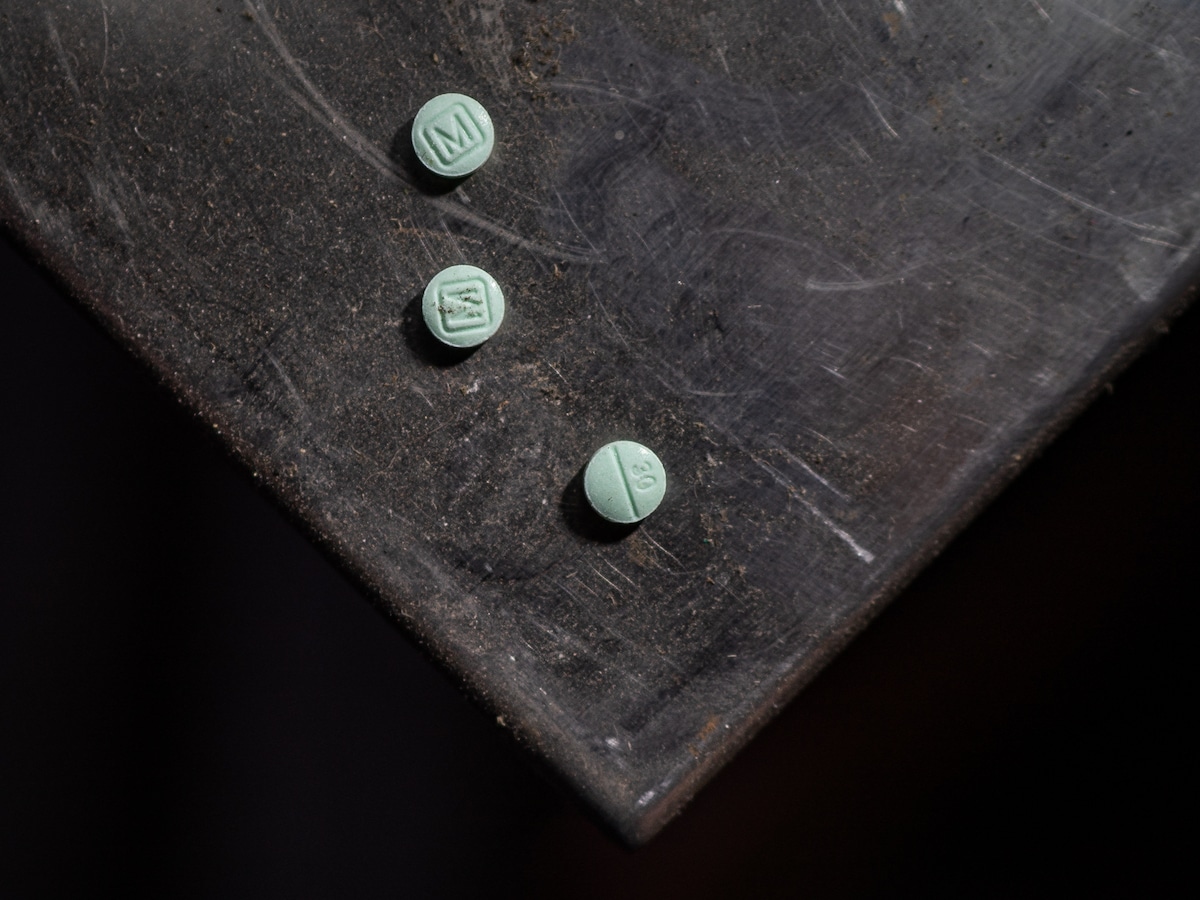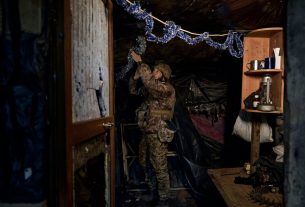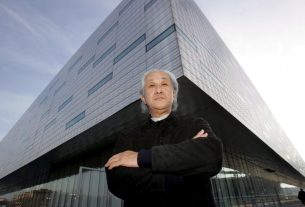Warning: This graphic requires JavaScript. Please enable JavaScript for the best experience.
Fentanyl’s catastrophic surge came after the Drug Enforcement Administration cracked down on the excesses of the U.S. opioid industry. Millions of Americans who had become addicted to prescription pain pills suddenly found them difficult or impossible to get.
Mexican cartels stepped in to fill the vacuum. Traffickers, who relied for decades on plant-based drugs such as heroin, cocaine and marijuana, are now using chemicals in clandestine laboratories to manufacture fentanyl powder and pills to meet the ever-increasing demand in the United States.
Fentanyl is 50 times more potent than heroin, and its compactness makes it far easier to smuggle. The synthetic opioid is so powerful that a year’s supply of pure fentanyl powder for the U.S. market would fit in the beds of two pickup trucks.
How fentanyl compares
with other opioids in strength
1 milligram of fentanyl
has the same potency as…
50 milligrams of
heroin…
67 milligrams of
oxycodone…
and 100 milligrams
of morphine

How fentanyl compares
with other opioids in strength
1 milligram of fentanyl
has the same potency as…
50 milligrams of
heroin…
67 milligrams of
oxycodone…
and 100 milligrams
of morphine

How fentanyl compares with other opioids in strength
1 milligram of fentanyl
has the same potency as…
50 milligrams of
heroin…
67 milligrams of
oxycodone…
and 100 milligrams
of morphine
In a seven-part investigation, The Washington Post traced the synthetic-drug crisis from the back alleys of Tijuana, Mexico, to official Washington and from warehouses in northern Mexico to neighborhoods in Utah, Colorado and San Diego.
The Washington Post followed the fentanyl epidemic from Mexican labs to U.S. streets.
As fentanyl trafficking boomed, U.S. counternarcotics cooperation with Mexico deteriorated. U.S. border authorities are now overwhelmed, and, since July, the volume of fentanyl seized coming across the Mexico border each month has doubled from earlier in the year.
Despite record numbers of American deaths, federal officials have been slow to react. The DEA said it is now taking direct aim at the cartels and the epidemic.
Shifting operations
Early shipments of illicit fentanyl came from China, much of it ordered through the dark web and concealed in small parcels sent through the mail.
Mexican cartel chemists learned to make fentanyl themselves, quickly replacing China as the main source of the drug and operating on a much larger scale, according to the DEA.
It takes months and acres of land to grow and process poppy into opioids, but fentanyl can be manufactured in a small lab with relatively accessible chemicals. The entire process to a finished product can take just a few days.
Seizing the precursor chemicals that traffickers need is extremely difficult. Many are used to make basic goods, such as medicines, pesticides and soap.
The vast majority of fentanyl seizures occur at U.S.-Mexico border crossings in California and Arizona.
The cartel transportation networks use the U.S. interstate system to reach wholesale markets in Los Angeles, Las Vegas, Chicago and East Coast cities, where street-level drug dealers take over.
Increasing demand
U.S. health officials do not have reliable estimates of the number of fentanyl users or recent deaths in the country. Key monitoring programs that could have alerted authorities to the increased flow of fentanyl were defunded by the federal government just as the drug was hitting U.S. streets.
Since the early 2000s, three waves of the opioid epidemic — fueled first by prescription pain pills, then by heroin and now by illicit fentanyl — have taken the lives of nearly three-quarters of a million Americans. The damage to U.S. communities cost the economy $1.5 trillion in 2020 alone, according to a congressional analysis.
U.S. drug agents say it has been nearly impossible to stop fentanyl trafficking. Border authorities can screen only a small fraction of the more than 219,000 vehicles crossing from Mexico each day.
Federal agents estimate that they are seizing about 5 to 10 percent of the drugs coming from Mexico — if that much.

Fentanyl seizures at the
southern border have
skyrocketed since 2016
The vast majority of fentanyl seized at the
southern border is confiscated at ports of
entry, primarily in San Diego and
southern Arizona.

Fentanyl seizures at the southern border
have skyrocketed since 2016
The vast majority of fentanyl seized at the southern
border is confiscated at ports of entry, primarily in
San Diego and southern Arizona.

Fentanyl seizures at the southern border
have skyrocketed since 2016
The vast majority of fentanyl seized at the southern border is confiscated at ports of entry,
primarily in San Diego and southern Arizona.
U.S. law enforcement agencies are on pace to confiscate more than 23,000 pounds of fentanyl powder this year, up from 4,000 pounds in 2018, according to a Post analysis of the latest government data. The number of fentanyl tablets seized is projected to reach 35 million, up from 289,000 in 2018.
At the southern border, U.S. authorities have seized an additional 16,200 pounds of fentanyl through the first 11 months of 2022, an analysis of the most recent Customs and Border Protection data shows. In November, the agency seized 2,900 pounds of fentanyl at ports of entry along the southern border, the highest monthly total ever, an amount that easily eclipses what the agency confiscated during the entirety of 2018.
Cascading failures
President Donald Trump told Americans that a wall along the border with Mexico would stop the torrent of drugs. But nearly all the fentanyl entering the United States passes through official border crossings — not through the deserts and mountains.
Successive administrations failed to deploy technology to detect the drugs.
LEFT: President Donald Trump and Mexican President Andrés Manuel López Obrador at the White House on July 8, 2020. (Jabin Botsford/The Washington Post) RIGHT: A view of the U.S.-Mexico border barrier. (Erin Patrick O’Connor/The Washington Post)
The surge of fentanyl into the United States has been exacerbated by a breakdown in the U.S.-Mexico drug war partnership. After taking office in 2018, Mexican President Andrés Manuel López Obrador rejected the security agreements that had underpinned anti-drug cooperation for a decade, saying that approach intensified violence in Mexico.
“Mexico needs to do more. We believe that they can do more,” DEA Administrator Anne Milgram told The Post. “We think it’s vitally important that Mexico work on these issues as tirelessly as we do.”
Congress commissioned an extensive report, published in February, which determined that progress against fentanyl would be achieved only by pairing enforcement with a reduction in U.S. demand.
Mass overdose deaths
Fentanyl is eclipsing heroin and prescription pain pills as the go-to opioid.
Drug dealers in the United States have been spiking drugs with fentanyl to boost potency and get more customers hooked. Many users have no idea. New or infrequent opioid users are at a far greater risk of fatally overdosing.
Today, the drug cartels also are churning out counterfeit oxycodone pills masquerading as what was once the most sought-after pain pill on U.S. streets — Mallinckrodt Pharmaceuticals’ baby blue 30 mg tablets known as blues or M-30s.
Batches of “rainbow” tablets have been seized on U.S. streets and on the border in recent months. Narcotics agents think the colors are meant to signal that the pills contain fentanyl.
The epidemic has hit the young with alarming speed and disproportionately killed Blacks and Native Americans in recent years. In 2020, overdose death rates increased 44 percent for Black people and 38 percent for Native Americans.
More people are overdosing in groups because of fentanyl’s potency.
In Colorado, five friends died in an apartment in February after using cocaine they did not know was spiked with fentanyl. At the time, it was the largest reported mass fatal overdose in the nation.
As police raced to uncover who supplied the drugs, the answers they would find underscore the challenge of holding dealers accountable for the deaths of their customers.




